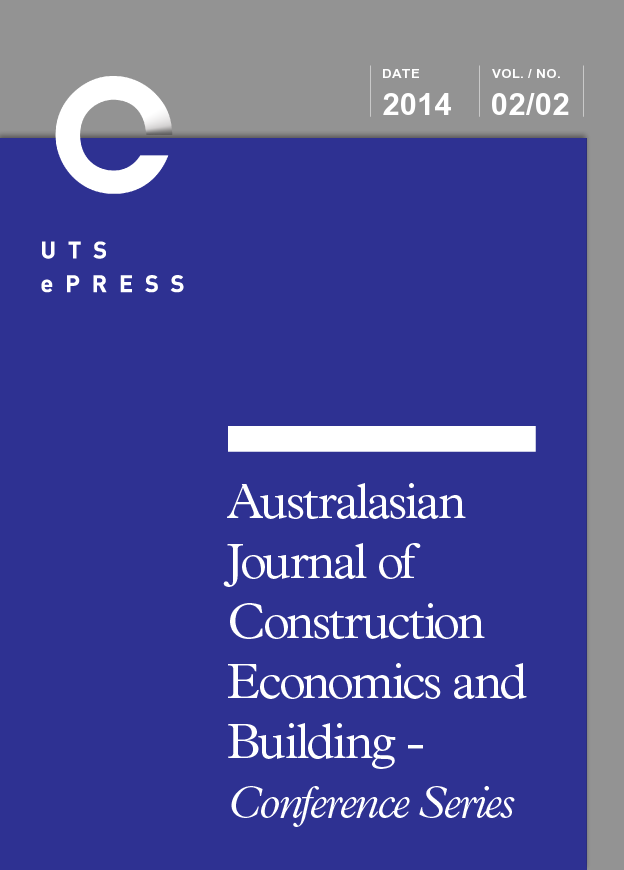Establishment of Performance Scales for Team Integration Assessment
Main Article Content
Abstract
The increased use of the alliance model in recent years highlights the importance of integration practice among multi-disciplinary teams, as it promotes a collaborative culture and the continuity of equitable relationships to improve project performance. If continuous improvement in project alliances is to be achieved through the use of integrated teams, then a means of assessing how well teams integrate and how team integration changes over time, needs to be introduced. In response to that need, an Alliance Team Integration Performance Index (ATIPI) has been developed as part of a wider study to develop an assessment tool for team integration in road construction alliance projects in New Zealand. In this paper, a set of Key Indicators (KIs) of team integration practice and the Quantitative Measures (QMs) for each KI are first introduced and then, in order to enhance the associated ATIPI model, the establishment of scales for the performance levels, namely ‘poor’, ‘average’, ‘good’, ‘very good’ and ‘excellent’, for each KI are described. The establishment of performance scales will help ensure that the assessment of team integration practice is quantified in a consistent and objective manner.
Keywords: Alliance, Assessment, New Zealand, Performance Scales, Team Integration
Article Details
Section
Authors who publish with this journal agree to the following terms:
a) Authors retain copyright and grant the journal right of first publication with the work simultaneously licensed under a Creative Commons Attribution License that allows others to share and adapt the work with an acknowledgement of the work's authorship and initial publication in this journal.
b) Authors are able to enter into separate, additional contractual arrangements for the non-exclusive distribution of the journal's published version of the work (e.g., post it to an institutional repository or publish it in a book), with an acknowledgement of its initial publication in this journal.
c) Authors are permitted and encouraged to post their work online (e.g., in institutional repositories or on their website) prior to and during the submission process, as it can lead to productive exchanges, as well as earlier and greater citation of published work (See The Effect of Open Access). Where authors include such a work in an institutional repository or on their website (ie. a copy of a work which has been published in a UTS ePRESS journal, or a pre-print or post-print version of that work), we request that they include a statement that acknowledges the UTS ePRESS publication including the name of the journal, the volume number and a web-link to the journal item.
d) Authors should be aware that the Creative Commons Attribution (CC-BY) License permits readers to share (copy and redistribute the work in any medium or format) and adapt (remix, transform, and build upon the work) for any purpose, even commercially, provided they also give appropriate credit to the work, provide a link to the license, and indicate if changes were made. They may do these things in any reasonable manner, but not in any way that suggests you or your publisher endorses their use.
